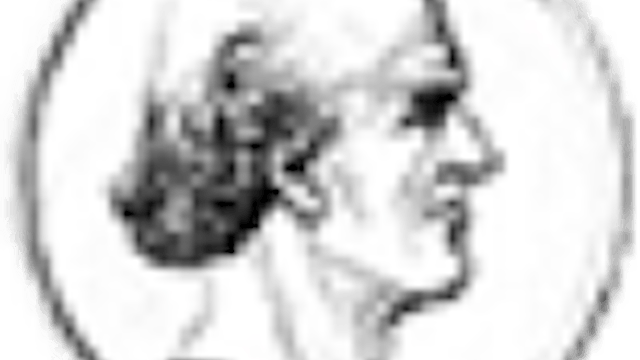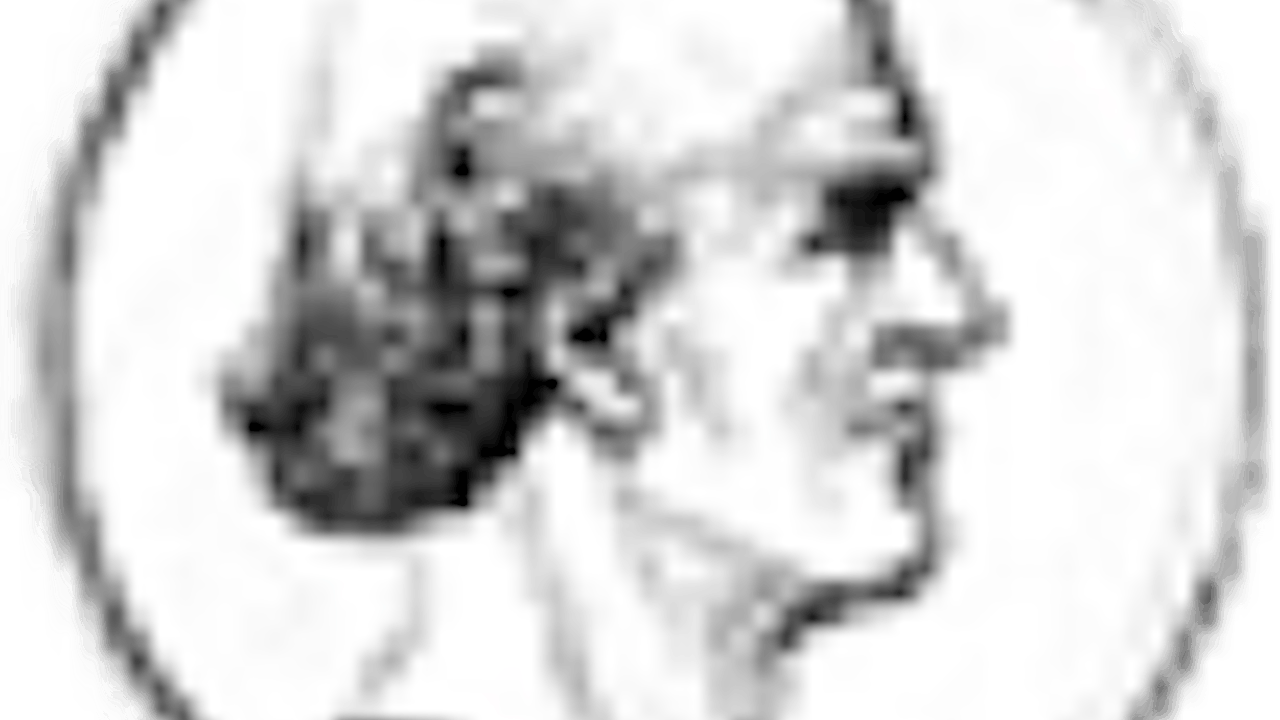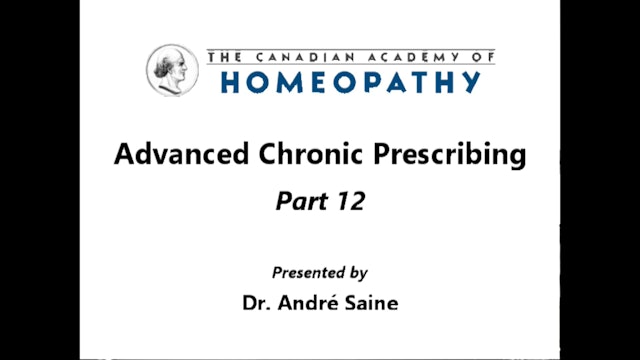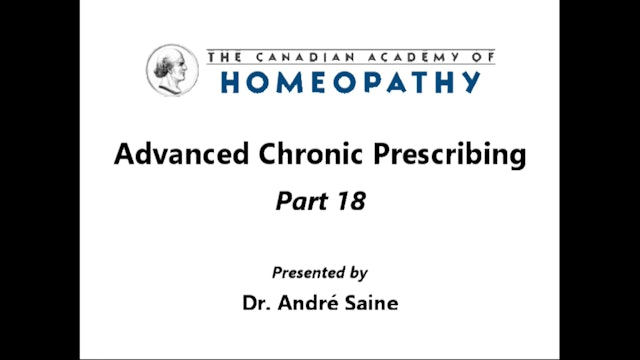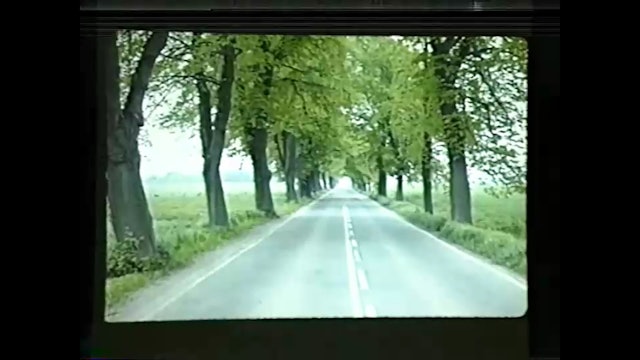Advanced Chronic Prescribing
The History of Homeopathy
An overview of the history and evolution of homeopathy will be discussed throughout the course. The emphasis will be on learning how the great masters of homeopathy practiced and to be able to recognize the numerous versions of non-Hahnemannian homeopathy. Students will learn the value of the most important works in homeopathy.
The Philosophy of Homeopathy
This part of the program presents the fundamental principles of homeopathic doctrine through the study of important works such as the Organon and Hahnemann’s Chronic Diseases.
A. The Basis of Medicine
Medicine: the definition of medicine, the scope of medicine, five basic principles of classical medicine
The physician: the definition of a physician, the mission of the physician, including the two main objectives of the physician and the two basic requirements of the physician
The Vital Force
Health: the definition of health, the determinants of health
Disease: the definition of disease, the phenomenon of great diversity, disease vs. aging, definition of acute disease, acute collective disease, definition of chronic disease, real vs. apparent disease, the causa occasionalis, the concept of artificial disease
Causes and factors of disease
Multifactorial phenomena: endogenous causes and factors (heredity vs. acquired predispositions, the untunement of the vital force), exogenous causes and factors, hygiene, mediate vs. immediate causes, primary vs. secondary causes
Different types of intervention: preventive, supportive, suppressive, curative, palliative
The therapeutic ideal
B. Homeopathy: The Science of Therapeutics
The definition of homeopathy
The ten fundamental principles of homeopathy
The scope, limits and possibilities of homeopathy
The place of homeopathy in medicine
The qualities, disposition and knowledge required to practice homeopathy
How to study homeopathy: an overview of the important works
Other types of medicinal practice: antipathy, allopathy, isopathy
Differences between homeopathic practice and other types of medical practice
Cure vs. Recovery
The role of hygiene in the practice of homeopathy
The role of complementary care
The question of miasm: concept of acute and chronic miasms as seen by Hahnemann: limitation of the vital force, evolution of chronic diseases, question of suppression, theory of healing with homeopathy
The evolution of the concept of miasm through pseudo
Hahnemannian trends
The concept of miasm today: phenomenon of susceptibility and immunity
The Practice of Homeopathy
The main emphasis of this part of the course is to help the student develop a keen sense of observation and a deep understanding of the patient in the application of the strict inductive method of Hahnemann.
A. Case Taking
The interview: a thorough review of the basic method, different strategies and interpretation of different answers
The art of perception
Horizontal and vertical vision
Objective symptoms
Examination of the patient
Case taking of the acute patient
Case taking of the infant
Case taking of the unconscious patient
Keeping good clinical records
B. Case Analysis
The totality of symptoms
Classification and valuation of syptoms
Finding the genius of the case
Finding the simillimum
Dissimilar diseases
Complex diseases
C. Repertorization
D. The Prescription
The single remedy
Optimal posology: the minimum dose, the single dose and the repetition of the remedy
E. The Follow-up Visit
The interview
The direction of cure
The homeopathic aggravation
The homeopathic prognosis
F. The Second Prescription
Learning to wait
Change of potency
Change of remedy
The Simile vs. the Simillimum
The placebo
G. Difficult Cases
Defective Cases
The hypersensitive patient
Patients taking allopathic drugs/antidoting factors
Patients with advanced organic disease
Homeopathy and palliation
H. Homeopathy and Prophylaxis
Homeopathy has a very long history of using homeopathic remedies for prophylactic purposes. What can be treated under the principles of similarity can also be prevented. Hahnemann did his first experiment in homeoprophylaxis in 1799 during an epidemic of scarlet fever. In an extensive review of the literature on the results obtained by homeopathy in epidemics, the results obtained with homeoprophylaxis are as consistent and predictable as the therapeutic results of homeopathy.
However, homeoprophylaxis can be applied beyond the prevention of infectious diseases, as it can be applied to any situation that can be anticipated, such as physical trauma (e.g., surgery) or emotional difficult times (e.g., funerals). The greater the degree of similarity between the remedy and the genius epidemicus of the incidental disease or condition, the more successful will homeoprophylaxis be.
In this part of the course, we review the principles of posology and remedy selection for homeoprophylaxis.
I. Diet, Regimen and Supportive Measures during treatment
In acute diseases
In chronic diseases
Factors that may affect the remedy and the curative response of the patient
J. The Use of the Computer in Homeopathy
Materia Medica
The objectives of this section are to first have the student understand how to study and research the Materia Medica with a review of the most important works and their use, and secondly, to develop an understanding of the most used remedies through comparative Materia Medica.
How to study the Materia Media
The lesser used remedies
The acute remedies
The chronic remedies
Clinical Subjects
Throughout the course, the student will learn to differentiate the characteristic from the common symptoms in each disease category. This is an essential part of practicing homeopathy well. Students will learn to interpret symptoms in the language of the repertory as well as differential materia medica. Clinical subjects will be developed by conditions as well as systems, and include: neurology, epilepsy, pneumonia, rheumatology, psychiatry and surgery & advanced first aid.
Clinical Practice
This part of the course consists of live case taking of patients, case analysis, repertorization, prescription and follow-up visits. Here the student can develop the practical skills needed to practice homeopathy with excellence.
The Academy offers Advanced Chronic Prescribing to primary contact health care professionals who are trained in pathology and diagnosis. This includes licensed or regulated practitioners of:
Allopathic Medicine
Physician’sAssistant
Chiropractic
Midwifery
Naturopathic Medicine
Veterinary Medicine
Osteopathic Medicine
Dentistry
Nurse Practitioner
Students Enrolled in Above Programs
Special cases may apply and should be inquired about.
Neurology
The most common neurological conditions and multiple sclerosis in particular are reviewed through paper and live cases in terms of the examination of the patient and differentiation of what is common versus what is peculiar, which can only be acquired through clinical experience.
Epilepsy
Epilepsy has its own section as a neurological condition, as homeopathy has a vast experience in the treatment of epileptic patients, which is reviewed through paper cases in terms of the examination of the patient, differentiation of what is common versus what is peculiar and differential materia medica.
Pneumonia
Homeopathy offers the best-documented treatment in all of medicine for patients with all types and degrees of severity of pneumonia. In this part of the course, examination and treatment of pneumonia patients are reviewed with paper cases, differentiation of what is common versus what is peculiar and differential materia medica.
Psychiatry
Homeopathy can successfully address most of the common psychiatric acute and chronic conditions from neurosis to psychosis. We review in this part of the course examination and treatment of psychiatric patients through paper cases, differentiation of what is common versus what is peculiar and differential materia medica
Rheumatology
Homeopathy has an excellent record in the treatment of rheumatic patients, regardless of the etiology, such as infection or autoimmunity. Paper cases of patients with rheumatic diseases, including rheumatoid arthritis, ankylosing spondylitis and polymyositis are reviewed with special emphasis on what is most characteristic from what is common and differential materia medica.
Homeopathy in Surgery and Advanced First Aid
Homeopaths who were also surgeons developed great expertise on the possibility of homeopathy for dealing with surgical conditions homeopathically. The most common surgical and first-aid conditions are reviewed through differential materia medica.
Also clear instructions are given on how to prepare patients before undergoing major surgery and how to prevent postsurgical shock, pain and bleeding and speed up the recovery time.
Any student enrolled in the course can choose to study to become a Fellow of the Canadian Academy of Homeopathy (F.C.A.H.). To obtain a fellowship, a student must first be eligible to take the course. Students interested in a Fellowship will be required to take xams based on the lecture material. At the end of the course there is a final comprehensive exam. Students must make arrangements through the secretary to have their exams proctored. Fellowship students must pass all exams with a minimum of 70% overall, complete the clinical proficiency requirements and satisfy all financial obligations.
FELLOWSHIP PROGRAM
The clinical proficiency requirement is mandatory for students pursuing the fellowship program. It consists of demonstrating proficiency in case taking, case analysis, and follow-up by taking a complete case with a follow-up interview. This may be done with a F.C.A.H. member in the office, or submitted on video tape. The cost is $100 per tape submitted plus the supervising F.C.A.H. member’s clinical rate. To maintain Fellowship status, a Fellow must pursue a minimum of 48 hours of continuing education every two years.
-
Advanced Chronic Prescribing Part 1
-
Advanced Chronic Prescribing Part 2
-
Advanced Chronic Prescribing Part 3
-
Advanced Chronic Prescribing Part 4
-
Advanced Chronic Prescribing Part 5
-
Advanced Chronic Prescribing Part 6
-
Advanced Chronic Prescribing Part 7
-
Advanced Chronic Prescribing Part 8
-
Advanced Chronic Prescribing Part 9
-
Advanced Chronic Prescribing Part 10
-
Advanced Chronic Prescribing Part 11
-
Advanced Chronic Prescribing Part 12a
-
Advanced Chronic Prescribing Part 12b
-
Advanced Chronic Prescribing Part 13
-
Advanced Chronic Prescribing Part 14
-
Advanced Chronic Prescribing Part 15
-
Advanced Chronic Prescribing Part 16
-
Advanced Chronic Prescribing Part 17
-
Advanced Chronic Prescribing Part 18a
-
Advanced Chronic Prescribing Part 18b

